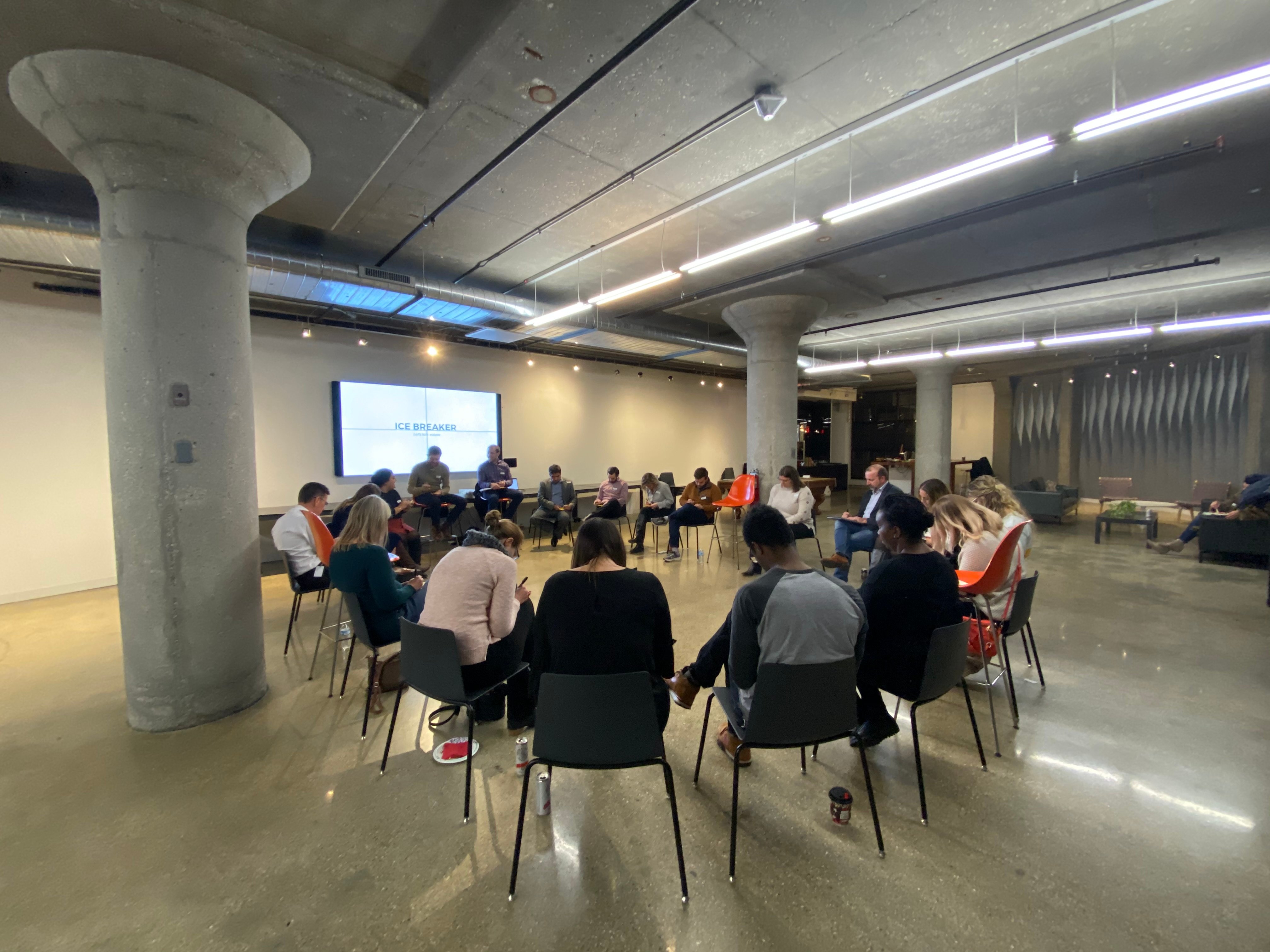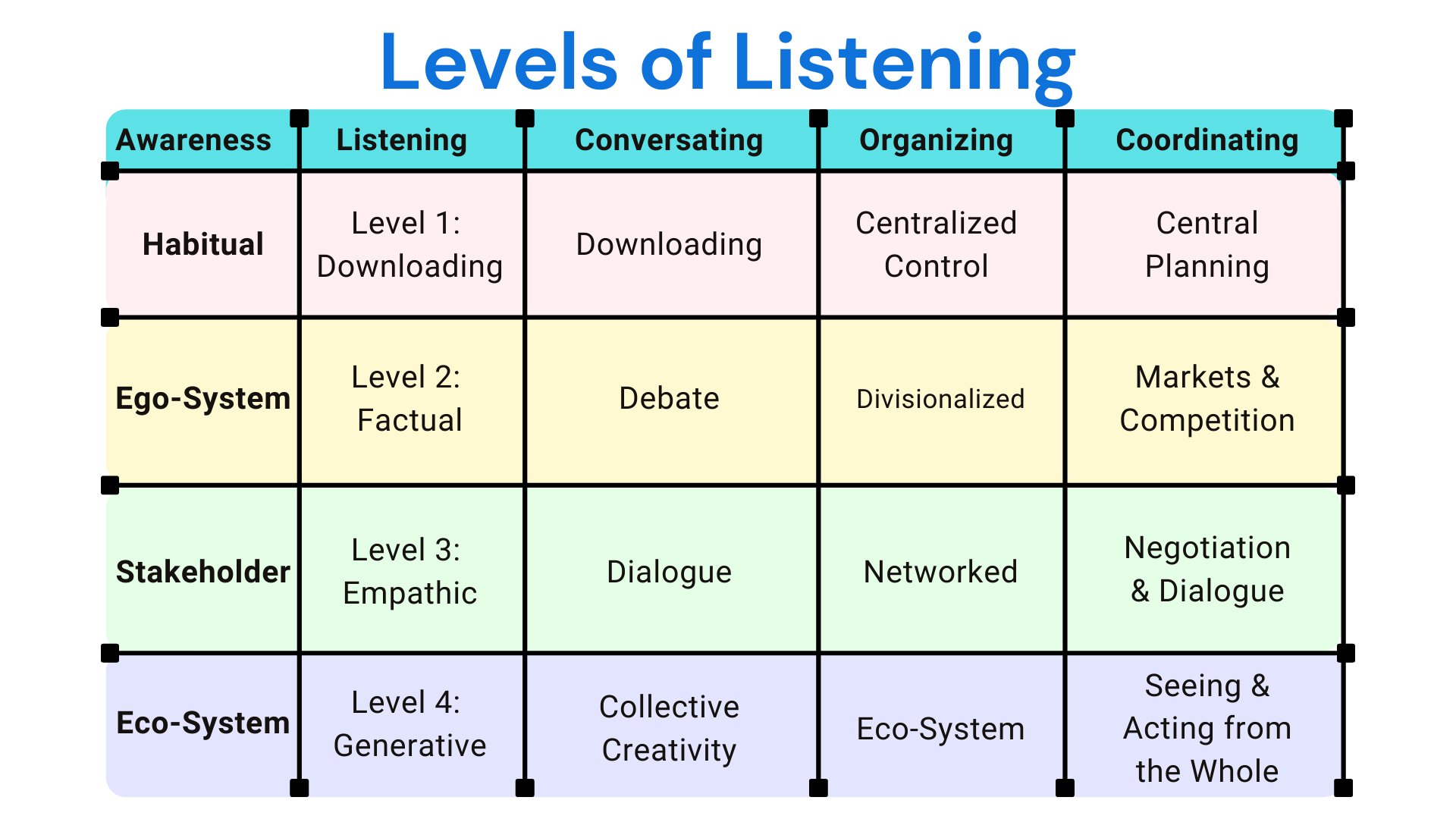
Culture change and culture evolution is really a collective journey of learning and development.
It is not a process that is guided by answers, but really a journey guided by questions.
The reality is this: as soon as you have a team, a culture will begin to form. It’s the language you share with each other, the habits and day-to-day practices, the tone of your interactions… these all contribute to and shape the culture. This powerful energy will grow organically, regardless of the frameworks used.
This makes culture evolution a collaborative journey — the environment in which it thrives can and is built together, and the power of the group can be harnessed to empower a healthy culture.
That’s why it’s essential to facilitate peer-to-peer culture sessions with your team in an effective and intentional way. It’s the only way to collectively empower alignment, growth, and evolution of the right culture for your business, organization, and community.
As noted in our "Perennial Truths," co-creation is essential for cultures to thrive and to truly cultivate the organization you envision. It is one of the most important elements. It is essential to take this approach and allow the "system" to see itself. This will unlock new levels of innovation and the realization of a number of breakthroughs.
This is all about co-creation, co-facilitation, and co-designing within your culture.
Why focus on cohort-based learning programs?
Training continues to be highly individual, with courses that present concepts and scenarios but leave the difficult task of making these relevant to today's social working environment up to the learner.
At Perennial Culture, we see this as a major misstep in culture change strategies as these legacy learning models have not proven effective for topics within culture, leadership, team building, and other social skills that are fundamental to the way we work.
We should be learning our concepts and frameworks in the same format as we execute our work - with other people. Utilizing cohort-based learning allows a group of people to move through the interactive content together, and share ideas and knowledge along the way.
But forming cohorts and peer-to-peer groups is simply not enough. We have to be intentional with the variables that make or break these experiences.
Utilizing the right principles for these experiences can truly transform your culture, transform the minds within it, the habits, and in the end, the organization.
What are some of these principles?
Principle 1 - Architect social interactions
First, you must think strategically about the social interactions that occur during learning and development sessions. There are now studies that demonstrate that peer interactions between participants were more important than the relationship with the instructor.
To make sure these are effective sessions, these peer interactions need to be designed carefully and done with a mix of introducing new concepts, reflecting on those concepts, and bringing them into their real-life scenarios.
In the beginning, this may feel unnatural for the group of people. They may have never actually formed a learning relationship with others. Continuity is key for a cohort to form into a cohesive group where members can feel comfortable exploring new ideas, sharing new ideas, and taking action on them.
That’s why we always tell organizations to stay away from those plug-and-play workshops that are one-off and done. This doesn’t provide enough time or connection for the topic to actually take root.
Principle 2 - Belonging & Inclusion
We are all social beings, and our social relationships impact our attention, motivation, and our learning. There are a few aspects that we must hold onto as we design our cohort groups to ensure they are inclusive and create this sense of belonging.
First, the size of the group. If you have too large of a group, people will feel overwhelmed by the number of comments and no one ends up feeling truly heard. Having too little of a group and the discussions become limited in terms of ideas and interaction. Ideally, the cohort size should reflect the size of the typical working team.
Second, is the diversity of the group. The innovative ideas a group can come up with are only as good as the diversity of the minds within the group. Diverse groups also generate more engagement and more learning outcomes. So think about how you can diversify the cohort groups. Either by race, age, background, job position, location... Etc.
Third - having routines that make them feel like they are part of a group. Having a group that regularly meets such as sharing a meal together weekly, or participating in monthly group connections tends to generate higher outcomes. Teams function better after they train together on a consistent basis. That’s why when we design our L&D programs, we develop rituals and routines that can reinforce that development in a sustainable way.
(Want to know how you can bring these rituals and connections in an online world? Connect with us today!)
Principle 3 - Keep authentic conversations alive!
Effective learning can really take place when communication is back-and-forth between at least two group members. We limit the amount of time that is spent presenting to the group and maximize the time spent on facilitating dialogues between members. So think about how you can facilitate social engagements in which learners respond to one another - create an actual conversation. This also activates a part of our brains that is responsible for anticipation and empathy - providing a deeper level of development that goes beyond the concept being discussed.
As an example, here are the different levels of listening and conversation that can happen between multiple people. The goal is to get to levels 3 & 4!

Principle 4 - Incorporating moments of deep reflection
We wrote about practicing deep reflection before, but here we are again. Research continues to show that we learn new concepts when we can take the information and organize it within our own experiences. To organize and then execute the information to our own situations. This is essential in developing a deeper understanding for the long term.
You will often find 5-15 minutes throughout our Perennial sessions to reflect on what we are covering, journal about the key lessons, and reflect on how these show up within our respective lives. Having these regular opportunities to reflect overtime drives positive outcomes that last.
Principle 5 - Enable knowledge sharing
Knowledge sharing is beneficial for both organizations and individuals. Especially when knowledge is shared across multiple levels of the company. Given the way work happens today, this is essential. Junior people are closer to the front lines and the work itself. Senior people are closer to key business information and strategic initiatives. When we open up knowledge sharing in all directions, insights can help fill gaps within the strategic initiatives and vice versa.
Most traditional ways and tools enable top-down approaches to knowledge sharing but this isn't enough today. Especially when it is common for employees to recreate the wheel, repeat others' mistakes, search for information, and more. If we open up the lanes of communication, we access the wealth of knowledge found within our colleagues.
Great peer group design encourages multi-directional knowledge flow and it's possible to take a systemic approach to this. Such as, designing a process where peers go through knowledge, examine it, understand it, integrate it, and then present it to others. This unlocks the knowledge-sharing element and also strengthens their own expertise and performance by participating in that process.
.png?width=561&name=Relationships%20empower%20impact%20(2).png)
Principle 6 - Developing Progressive Conflict.
One of the ongoing issues company cultures face is being able to resolve conflict effectively. The challenge is developing a mindset that values conflict and actually designing peer-group dialogues that empower participants to argue together.
Conflict can be extremely valuable, and if anything, is extremely important to have. But it is mostly avoided within teams. It always concerns me when people in relationships, teams, and company's say their people never argue.
Disagreements and actively engaging with conflicting conversations can make us more productive and creative. The issue is we have been programmed to jump to conclusions and stop questioning our ideas and theories and lean into our biases.
Having progressive conflict built within our peer group sessions is a great tool for learning and encourages us to reconsider our biases and see new perspectives to a problem. This is how most of the best ideas and solutions are built.
We must learn to argue and have well-structured controversies. This can be as simple as having participants make an initial judgment, present their conclusions to group members, challenge them with opposing views, actively search for new information, incorporate new perspectives into their thinking, and reach a new set of conclusions. This process can significantly increase the quality of decision-making and problem solving, as well as build deeper relationships within the peer group.
We often work in these conflicting events that drive a level of discomfort without impacting the psychological safety of the group. This provides the group the opportunity to productively work through the tension with other group members. In practice, you could ask the peer group to debate a situation, and then facilitate opportunities to workshop solutions.
In the end, our ideas become better because of the process. Participants can no longer coast through a session and hold a level of accountability to debate a situation.
Closing thoughts -
In today's work environment, which is mainly team-centric and fast-paced, managers and leaders are no longer in this supervising role. Now, they are at the center of cultivating innovation, knowledge, enabling performance and problem-solving. It is essential your people, and especially your mid-level leaders, are highly social and can champion the culture.
At the end of the day, utilizing these principles in your culture change strategies is transformative, impactful, and has the power to take your organization to the next level.
.png?width=2560&name=Copy%20of%20CFmke%20banner%20(5).png)
Why you should explore our "Culture as a Service" package?
We are experts in designing and facilitating these peer-to-peer sessions and developing L&D cohorts. After we set a foundation for your culture evolution strategy, we should look to develop a strategy that reinforces sustainability and peer group integration.
That's what our Culture as a Service package provides.
- Monthly & Quarterly Culture Pulse Checks
- Peer to Peer group sessions
- Mentors & Topic-specific training & development sessions
- 1:1 coaching.
Connect with us today to explore how this could drive value for your organization today!




